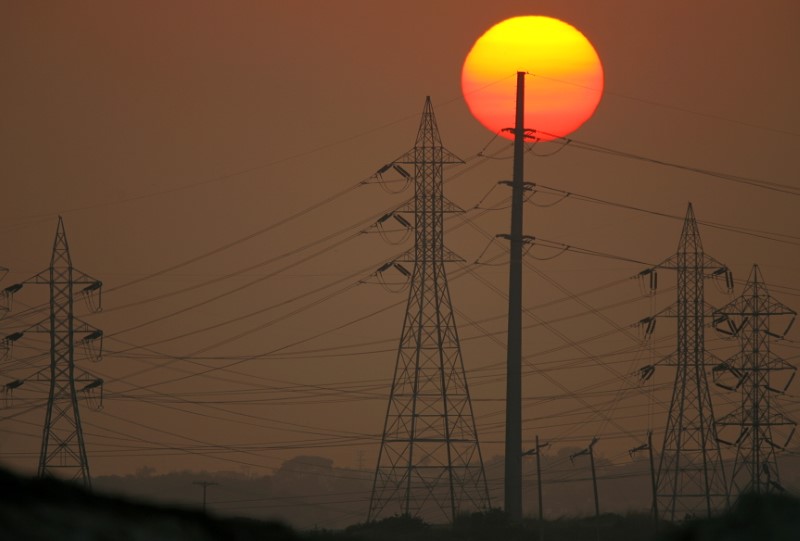By Nichola Groom
(Reuters) -California, struggling to balance its clean energy push with the need to boost tight power supplies and avoid rolling blackouts, will lean more on fossil fuels in coming weeks to keep the power on if scorching heatwaves stretch its grid.
The Golden State, which has among the world's most aggressive environmental policies, faces a potential supply shortfall of up to 3,500 megawatts during peak demand hours in the coming weeks. That is about 2.6 million households worth of electricity supply.
Governor Gavin Newsom plans to fill that gap in part by allowing industrial energy users to run on diesel generators and engines, according to a recent emergency proclamation. The state says it is devising a plan to offset additional emissions through investments in air quality improvements.
"We're getting additional reliability at the cost of additional environmental impacts from emissions," Seth Hilton, an attorney with Stoel Rives who represents energy companies in regulatory proceedings in California, said in an interview.
California's predicament demonstrates the challenges electricity grids face by moving away from natural gas and coal power while incorporating large amounts of wind and solar energy that only run when the wind is blowing or the sun is shining.
California has a goal of sourcing 60% of its power from renewable sources by 2030. Other governments crafting their own energy policies are watching closely.
Nationally, President Joe Biden aims to decarbonize the entire U.S. power sector by 2035. Utilities have said that goal may not be achievable without big breakthroughs in clean technology.
This year in California, extreme drought has slashed 1,000 MW of hydroelectric power capacity; wildfires threaten transmission lines that bring in power from other states; and a fire at a San Francisco-area gas plant knocked out 300 MW of supply, state agencies said. All this made this year's supply shortfall worse than the state expected months ago.
Last month, utilities Pacific Gas & Electric and San Diego Gas & Electric warned the state Public Utilities Commission about delays in several battery projects to store wind and solar energy for peak demand periods. They said supply chain disruptions linked to the coronavirus pandemic delayed the projects that were set to come online Aug. 1.
Company officials would not say how many were delayed or predict when the storage facilities would be ready.
On July 30, Newsom ordered the state to pay large energy users to reduce their draw on the grid during an extreme heatwave by shifting to backup generators. These typically run on diesel fuel.
The order also allowed ships to use auxiliary engines, often diesel-fired, while berthed at port instead of plugging in to the grid. It eased air quality requirements restricting the amount of fuel natural gas plants can use to generate power.
Newsom's office said the measures would only be used as a last resort and did not represent a setback to the state's environmental ambitions.
"The state is expediting progress toward transition of its grid and will continue to focus on development of new clean energy projects," a spokesperson for the governor said in a statement.
The order directed California's air quality regulator to draw up a plan by mid-November to mitigate any added emissions through air quality improvements in low-income communities. That could include investments in emissions-free backup generation and technologies that tap electric vehicle batteries to feed the grid, a California Air Resources Board spokesperson said.

Environmental justice activists said the state should be paying low-income households, rather than polluters, to reduce consumption during grid emergencies.
"We could be paying people to set their AC at 85 degrees on a hot day," Shana Lazerow, legal director for Communities for a Better Environment, said in an interview.